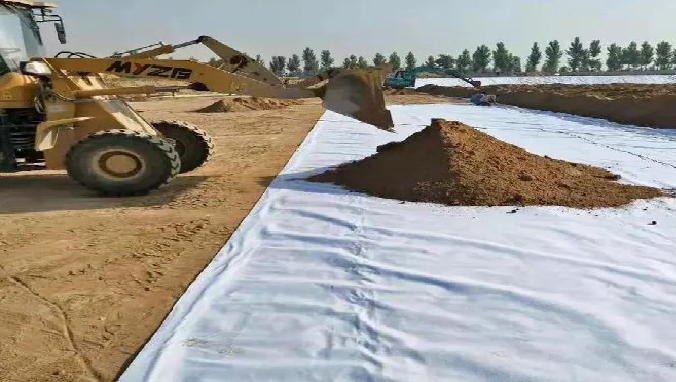Geotextile Non Woven Fabric: Industry Knowledge Q&A
Geotextile non woven fabric is a critical material in the geosynthetics industry, widely used in civil engineering projects, infrastructure development, and environmental protection applications. Its unique structure, created by bonding fibers mechanically, thermally, or chemically rather than weaving, makes it highly effective for stabilizing soil, protecting geomembranes in landfill applications, and improving pavement longevity. As global infrastructure development and environmental regulations expand, the use of geotextile non woven fabric continues to grow, offering engineers cost-effective and durable solutions for various projects.
What is geotextile non woven fabric and how is it made?
Geotextile non woven fabric is manufactured from continuous or staple fibers, most commonly polypropylene or polyester, which are bonded together rather than woven. The bonding methods—needle-punching, spunbonding, or thermal bonding—determine the fabric’s strength, thickness, permeability, and durability. This material performs multiple functions including filtration, separation, drainage, cushioning, and protection. By providing an effective interface between soil layers or protecting geomembranes, non woven geotextiles enhance the overall performance and longevity of civil engineering projects and other infrastructure works.

Where is geotextile non woven fabric commonly used?
Geotextile non woven fabrics are widely applied in road and highway construction for subgrade separation, in drainage systems to filter soil while allowing water flow, in landfills as protective layers, and in erosion control projects along slopes and waterways. These fabrics improve soil stability, extend pavement life, and reduce maintenance costs. The global geotextile non woven fabric market is valued at $4.73 billion in 2024, reflecting strong demand across civil and environmental engineering sectors.

How do engineers select the right geotextile non woven fabric?
Engineers select geotextile non woven fabric based on project-specific requirements such as tensile strength, puncture resistance, elongation, permeability, and UV stability. For filtration applications, the apparent opening size (AOS) and permittivity must match the soil gradation. For separation under pavements, tensile strength and elongation under sustained loads are crucial. In landfill protection, puncture resistance and chemical stability are key for long-term performance. Designers follow ASTM and EN standards to ensure compliance, and technical resources such as Geofantex product specifications are valuable for material selection and quality verification.
Market trends and future outlook
The global geotextiles market, including non woven fabrics, was valued at $7.10 billion in 2022 and is projected to grow at a CAGR of approximately 6.6% from 2023 to 2030, driven by expanding infrastructure, urbanization, and environmental regulations. (Source: Market Research Future, 2023) The Asia–Pacific region represents the largest market due to extensive road, rail, and landfill projects. For project planners and procurement teams, understanding market trends, regional supply chains, and material specifications is critical. Geofantex’s catalog provides reliable options for sourcing certified geotextile non woven fabrics with consistent quality.
Geotextile non woven fabric remains a cornerstone material in modern civil engineering and environmental applications. Its multifunctionality in filtration, separation, protection, and drainage ensures projects are durable, cost-effective, and environmentally compliant. With growing global demand and continued adoption in infrastructure and landfill projects, engineers and procurement teams benefit from understanding material specifications, market trends, and sourcing options. By integrating these fabrics into civil engineering projects, road construction, drainage, and landfill
Comments
Post a Comment